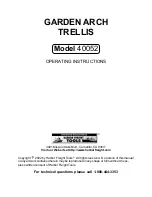
Spectrum Measurements
R&S
®
ESRP
398
User Manual 1175.7445.02 ─ 08
The noise power density is indicated in the marker field. With logarithmic amplitude
units (dBm, dBmV, dBmµV, dBµA), the noise power density is output in dBm/Hz, i.e. as
level in 1 Hz bandwidth with reference to 1 mW. With linear amplitude units (V, A, W),
the noise voltage density is evaluated in µV/Hz, the noise current density in µA/Hz or
the noise power density in µW/Hz.
In the default setting, the R&S
ESRP uses the sample detector for the noise function.
With the sample detector, the trace can additionally be set to AVERAGE to stabilize the
measured values. With RMS detector used, trace averaging must not be used since in
this case it produces too low noise levels which cannot be corrected. Instead, the
sweep time can be increased to obtain stable measurement results.
Prerequisite settings
The following settings have to be made to ensure that the power density measurement
yields correct values:
●
Detector: Sample or RMS
●
Video bandwidth:
≤ 0.1 resolution bandwidth with sample detector
≥ 3 x resolution bandwidth with RMS detector
●
Trace averaging:
With the sample detector, the trace can additionally be set to average to stabilize
the measured values. With RMS detector used, trace averaging must not be used
since in this case it produces too low noise levels which cannot be corrected.
Instead, the sweep time can be increased to obtain stable measurement results.
Correction factors
The R&S
ESRP uses the following correction factors to evaluate the noise density from
the marker level:
●
Since the noise power is indicated with reference to 1 Hz bandwidth, the bandwidth
correction value is deducted from the marker level. It is 10 x lg (1 Hz/BWNoise),
where BWNoise is the noise or power bandwidth of the set resolution filter (RBW).
●
RMS detector: With the exception of bandwidth correction, no further corrections
are required since this detector already indicates the power with every point of the
trace.
●
Sample detector: As a result of video filter averaging and trace averaging, 1.05 dB
is added to the marker level. This is the difference between the average value and
the RMS value of white noise. With a logarithmic level axis, 1.45 dB is added addi-
tionally. Logarithmic averaging is thus fully taken into account which yields a value
that is 1.45 dB lower than that of linear averaging.
●
To allow a more stable noise display the adjacent (symmetric to the measurement
frequency) points of the trace are averaged.
●
For span > 0, the measured values are averaged versus time (after a sweep).
Analysis
















































